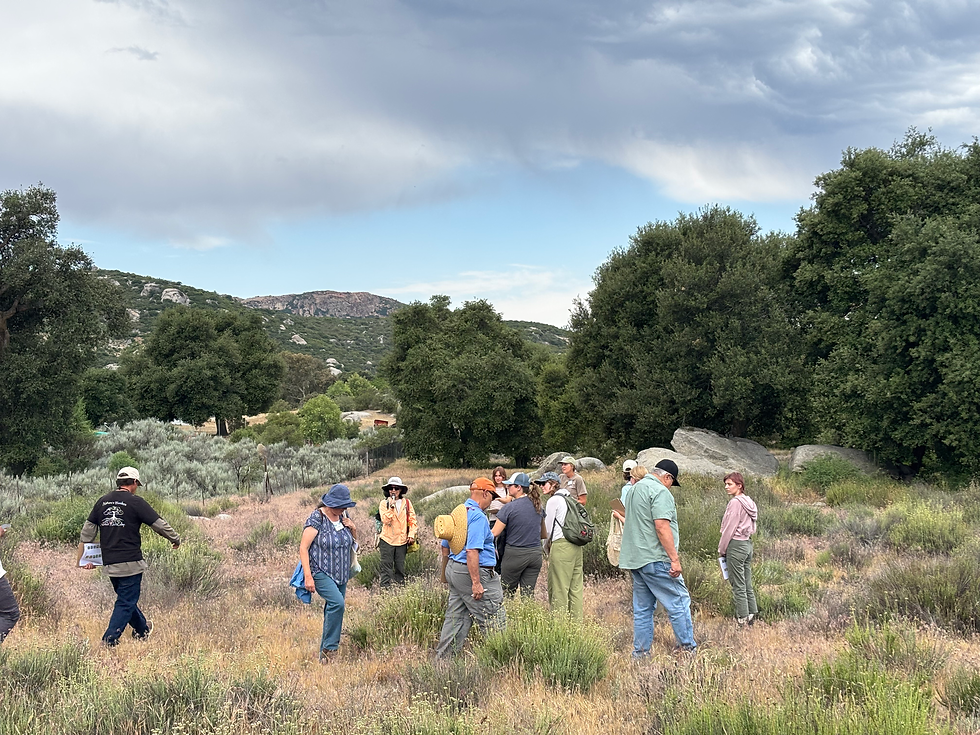Campo EPA Hosts Fuels Reduction Training Near Cleveland National Forest
- Climate Science Alliance

- Jul 24
- 2 min read
As a 2025 Giving Cycle awardee, the Campo Environmental Protection Agency facilitated a Stewardship Pathways training at a fuel break area on their homelands, in partnership with the Cleveland National Forest and Climate Science Alliance, to advance land, plant, and fire co-stewardship efforts in the region through knowledge exchange and community connections.

At the Campo Band of Mission Indians Environmental Protection Agency, many efforts are underway to build capacity and understanding to enhance Tribal infrastructure and resources around land, plant, and fire stewardship. As a recipient of a 2025 Giving Cycle award from the Climate Science Alliance’s Reciprocity and Regranting program, the Campo Environmental Protection Agency partnered with the Climate Science Alliance and federal agency partners at the Cleveland National Forest to develop and host a Stewardship Pathways training at a fuel break area on their homelands—where land, plant, and fire co-stewardship efforts come together through knowledge exchange and community connections.
“[The Campo Environmental Protection Agency] traces its cultural origins to the traditional environmental specialists of Kumeyaay society known as Kwasiiaay. Blending traditional knowledge and modern methodologies have created a sophisticated program of environmental protections that respects and augments contemporary tribal society.” - campo-nsn.gov

Held on May 31, 2025 on Kumeyaay lands in Campo, California, this training consisted of an in-person visit to an active fuel break area that spans the southern boundary of the Cleveland National Forest along the Lake Morena community. Fuel break areas are established to reduce fire risk to communities—such as those in the wildland-urban interface, like the Lake Morena community and the nearby Campo reservation. Active land stewardship and native plant restoration can significantly limit fire spread to surrounding wildlands; in these included multiple staff members of the Campo Environmental Protection Agency and Campo community members, in addition to U.S. Forest Service staff from the Cleveland National Forest and other representation from non-governmental organizations, university researchers and students, and the Lake Morena local community.
This Stewardship Pathways training was developed through months of collaboration, and aimed to strengthen management strategies through thoughtful engagement with an interdisciplinary group of training attendees that included both Tribal and non-Tribal community members and practitioners. The collaborations and connections stemming from both the development of this training, and the training itself, will help increase the fire resilience of the National Forest and surrounding areas and help advance co-stewardship of all ancestral lands.

The Climate Science Alliance team thanks the Campo Band of Mission Indians for welcoming us on their lands, and to their Environmental Protection Agency for their partnership, leadership, and vision for an impactful training opportunity. We would also like to thank Mike Connolly, Campo Tribal Member, for sharing some of your vast knowledge of Tribal Ecological Knowledge (TEK); the importance of the connection between humans, plants, and animals; and merging traditional burning and forest management to present day practices.
Thank you to the National Forest Foundation, whose support for the 2025 Giving Cycle of the Climate Science Alliance’s Reciprocity and Regranting program made this collaboration possible. Their support of community-led stewardship efforts will benefit our forests for years to come.


